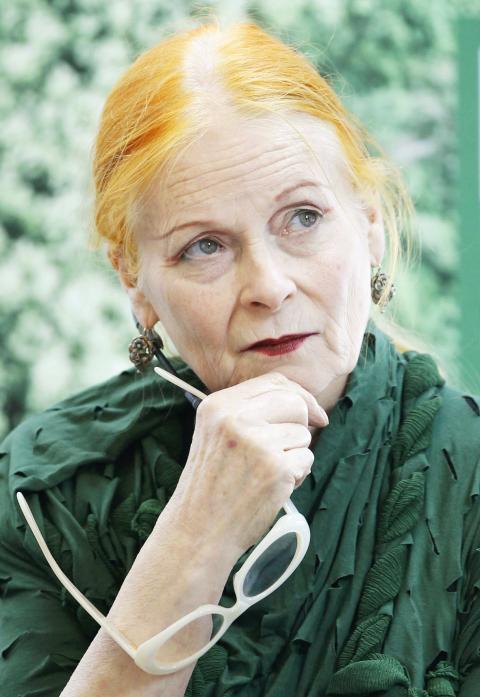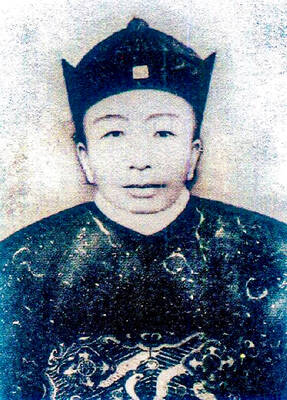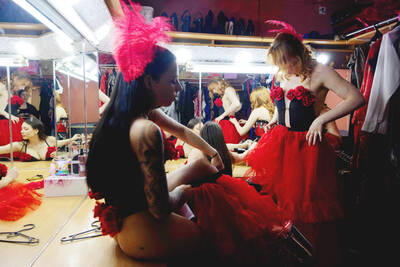In a whitewashed building in Nairobi’s industrial area, scores of women are sewing handbags for some of fashion’s best-known labels. But as their machines clack rhythmically they are also crafting a new future for themselves.
On a table by the open door there is a pile of Vivienne Westwood cloth totes, and the vivid colors of Carmina Campus bags by Ilaria Venturini Fendi spill across a bench.
Nairobi’s Hub workshop is the heartbeat of Ethical Fashion Africa, a not-for-profit group created by the International Trade Center, a joint UN and World Trade Organization body, to empower marginalized people by linking them up with fashion houses and distributors.

Photo: Reuters
The women are from some of Nairobi’s most deprived areas — Kibera, Korogocho, Dagoretti and others. The production room hums as ceiling fans slice the muggy air of Kenya’s rainy season. Thousands more work from home on the bags and accessories that will end up in designer stores across the world.
Joyce Kamau, a single mother with two children, works as a supervisor. She started at Ethical Fashion Africa two years ago and says she can now provide for her family’s basic needs. “We didn’t know we could get to this,” she says, gesturing to some startlingly bright machine embroidery. She said others in the group once found the work difficult but, she said: “I encourage them and I inspire them.”
The slogan adopted by Ethical Fashion Africa is “not charity, just work.” The factory is hidden away at the back of the GoDown, a thriving community of artists and musicians on the edge of Nairobi. As well as Westwood and Fendi, Stella McCartney sources work here, as do European distributors such as the Italian retailer Coop. There are plans to move into the US next year through a deal with Wal-Mart to distribute products online.
Westwood’s involvement has made the biggest media splash. In August she launched, from Nairobi, a collection of bags called Handmade with Love, and she also filmed her autumn campaign in the city.
“Vivienne has a long-term commitment, which is good ... now the next step is to start growing together to expand,” said Simone Cipriani, head of the International Trade Center’s poor communities and trade program.
About 5,000 people in Kenya are involved with the initiative and 90 percent of them are women, mostly from disadvantaged or isolated communities in Nairobi and beyond.
Training is key; before they are assigned an order the women are instructed on what to do. The training builds on existing skills such as sewing and tailoring. The women earn money, but more than that they learn techniques that will serve them in the future.
As for the fashion houses, the deal suits them too. “They get unique products ... that are worth the money. And, on top of that, they get a beautiful story of responsibility,” Cipriani said.
Fashion is fickle: hemlines rise and fall and what was in is very soon out. But Cipriani says this actually works to the project’s advantage and helps it achieve all-important sustainability. “The fact that it changes provides new work every six months. The technical capacities never change but with these we can do new work.”
Jeremy Brown, product development adviser for the International Trade Center’s Ethical Fashion Initiative, is working with a team of 10 Kenyans to do himself out of a job.
He rummages in a box in his cramped atelier and pulls out a Westwood bag with an orb emblem made from the recycled brass of old taps. Another Westwood bag is lined with old shirts, bought in the secondhand clothes markets of Nairobi. Recycled safari tents, end-of-line canvas and old street banners are all also used in products.
Vincent Oduor, the Hub’s human resources manager, grew up in Korogocho shanty town and knows how to quantify the human bottom line of this collaboration between two worlds. The 30-year-old breathes life into the “not charity, just work” motto. “It’s very rare for people from Korogocho to get employment. We suffer from social labels,” he said. “For [these women] the real joy is based on the dignity they find in working.”

The canonical shot of an East Asian city is a night skyline studded with towering apartment and office buildings, bright with neon and plastic signage, a landscape of energy and modernity. Another classic image is the same city seen from above, in which identical apartment towers march across the city, spilling out over nearby geography, like stylized soldiers colonizing new territory in a board game. Densely populated dynamic conurbations of money, technological innovation and convenience, it is hard to see the cities of East Asia as what they truly are: necropolises. Why is this? The East Asian development model, with

June 16 to June 22 The following flyer appeared on the streets of Hsinchu on June 12, 1895: “Taipei has already fallen to the Japanese barbarians, who have brought great misery to our land and people. We heard that the Japanese occupiers will tax our gardens, our houses, our bodies, and even our chickens, dogs, cows and pigs. They wear their hair wild, carve their teeth, tattoo their foreheads, wear strange clothes and speak a strange language. How can we be ruled by such people?” Posted by civilian militia leader Wu Tang-hsing (吳湯興), it was a call to arms to retake

This is a deeply unsettling period in Taiwan. Uncertainties are everywhere while everyone waits for a small army of other shoes to drop on nearly every front. During challenging times, interesting political changes can happen, yet all three major political parties are beset with scandals, strife and self-inflicted wounds. As the ruling party, the Democratic Progressive Party (DPP) is held accountable for not only the challenges to the party, but also the nation. Taiwan is geopolitically and economically under threat. Domestically, the administration is under siege by the opposition-controlled legislature and growing discontent with what opponents characterize as arrogant, autocratic

When Lisa, 20, laces into her ultra-high heels for her shift at a strip club in Ukraine’s Kharkiv, she knows that aside from dancing, she will have to comfort traumatized soldiers. Since Russia’s 2022 invasion, exhausted troops are the main clientele of the Flash Dancers club in the center of the northeastern city, just 20 kilometers from Russian forces. For some customers, it provides an “escape” from the war, said Valerya Zavatska — a 25-year-old law graduate who runs the club with her mother, an ex-dancer. But many are not there just for the show. They “want to talk about what hurts,” she